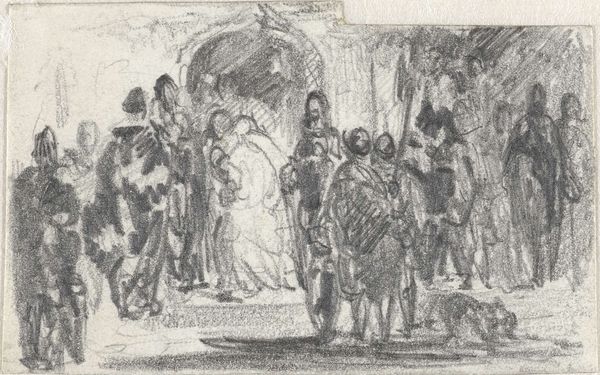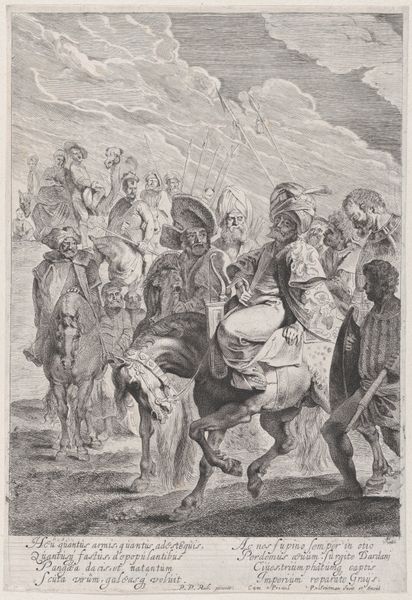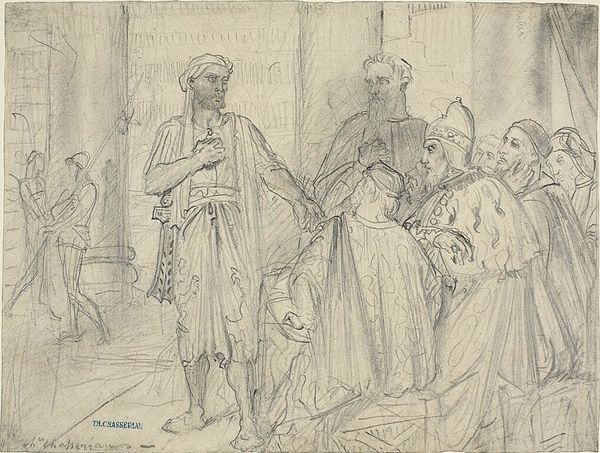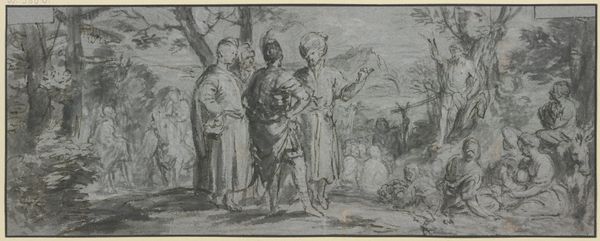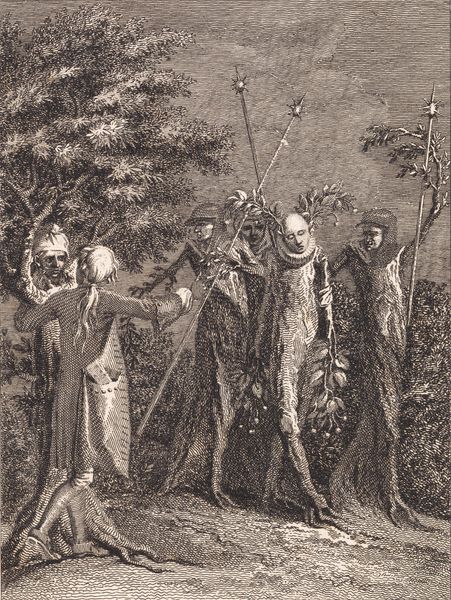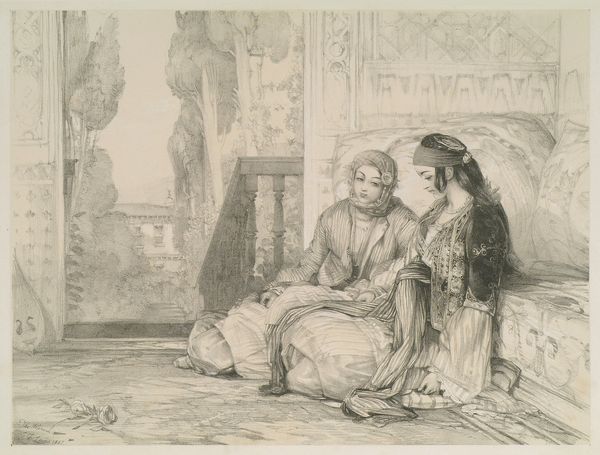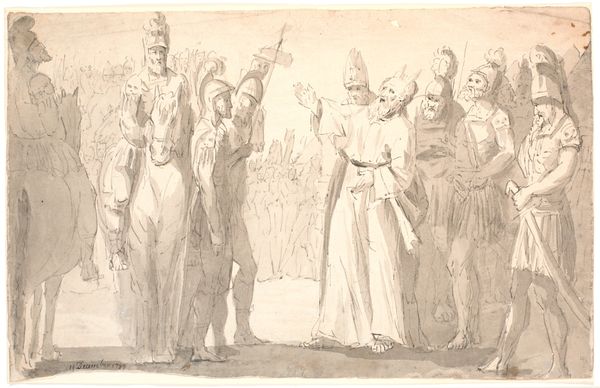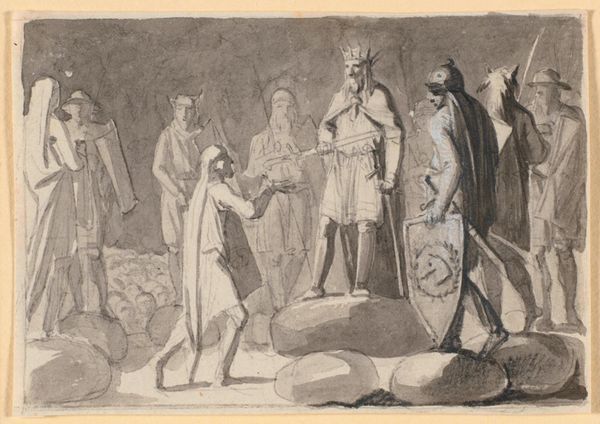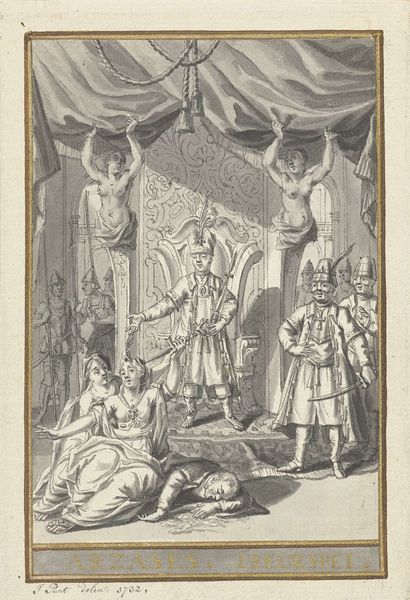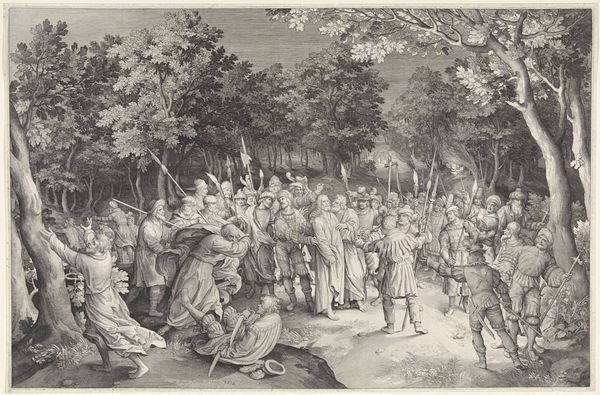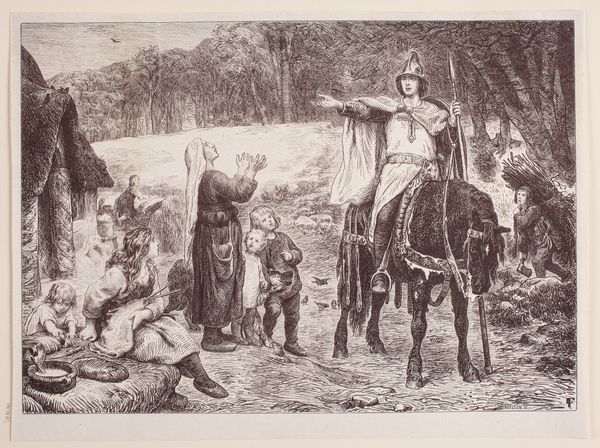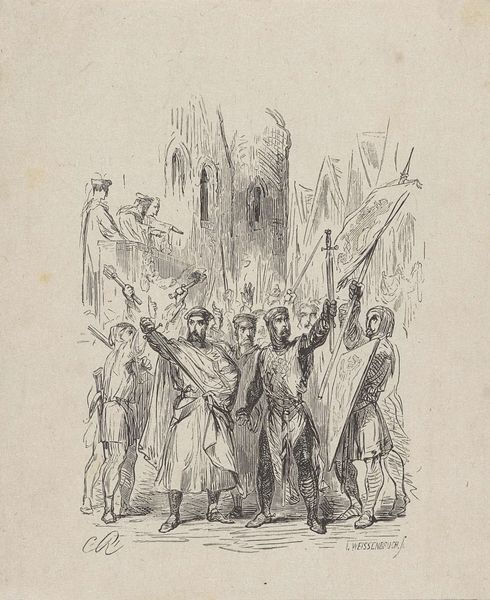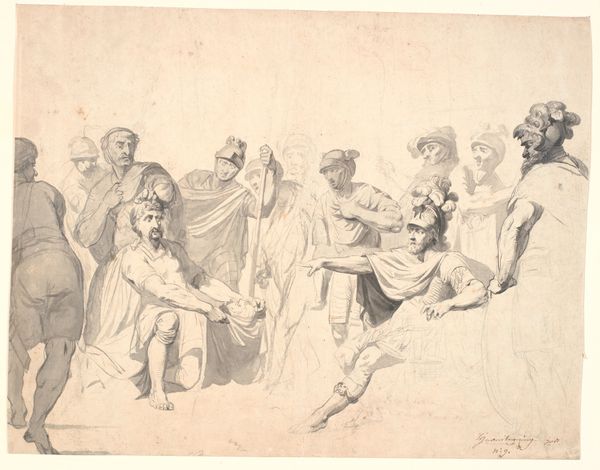
drawing, charcoal
#
drawing
#
narrative-art
#
charcoal drawing
#
figuration
#
romanticism
#
charcoal
#
history-painting
Dimensions: 150 mm (height) x 180 mm (width) (bladmaal)
Editor: This is "Jesus kissed by Judas in the Garden of Gethsemane," a charcoal drawing by Wilhelm Marstrand, dating sometime between 1810 and 1873. The chiaroscuro creates a dramatic mood, doesn’t it? What do you see in how the composition itself tells the story? Curator: Indeed. Notice the centralization of Jesus and Judas, visually connected by the act of the kiss. Consider how Marstrand employs line and value to direct our gaze. The dynamism of the figures surrounding them creates an almost frenetic energy, in stark opposition to Jesus's static pose. What do you observe about the textural variation within the drawing? Editor: I see what you mean. Some areas, like the figures in the background, are sketchier and less defined, while Jesus and Judas have more attention to detail. The contrast emphasizes their interaction. The whole scene is imbued with dramatic lighting effects. I suppose the composition functions to create a hierarchy? Curator: Precisely. Hierarchy is created not only through light and shadow, but also through the density of line and the degree of finish. The contrast enhances the sense of drama, effectively underscoring the weight of the moment depicted. The materiality of the charcoal itself, the velvety blacks against the stark whites, speaks to a very physical, expressive way of mark-making. How do these elements contribute to the overall impact? Editor: That’s a perspective I hadn’t fully considered before – seeing how the technique amplifies the narrative. Thanks, this was really insightful! Curator: My pleasure. It is in carefully examining these choices of composition and technique that we can uncover deeper understandings of art.
Comments
No comments
Be the first to comment and join the conversation on the ultimate creative platform.

